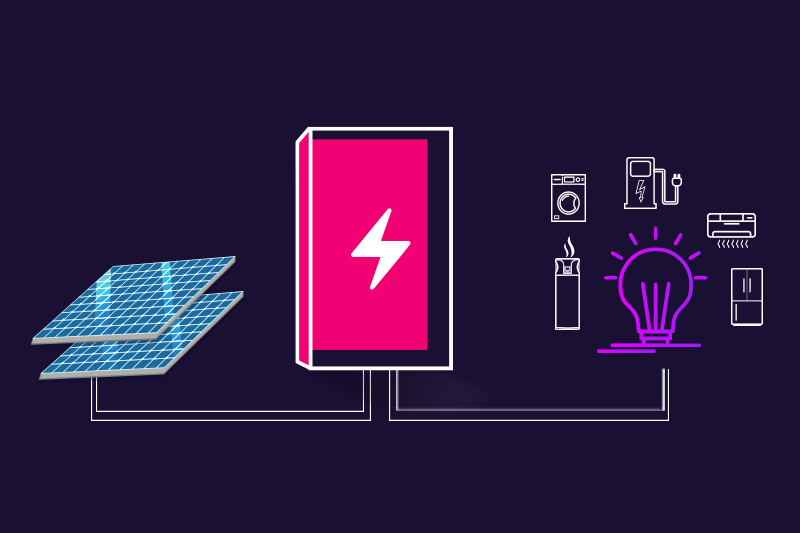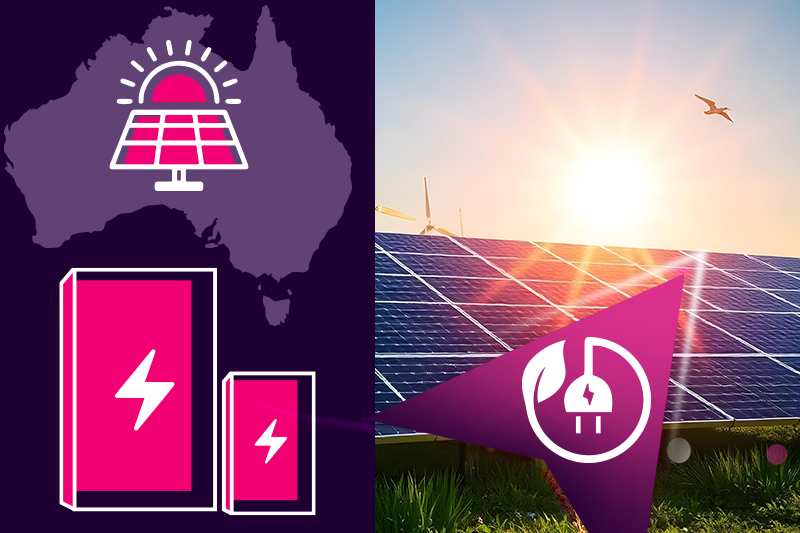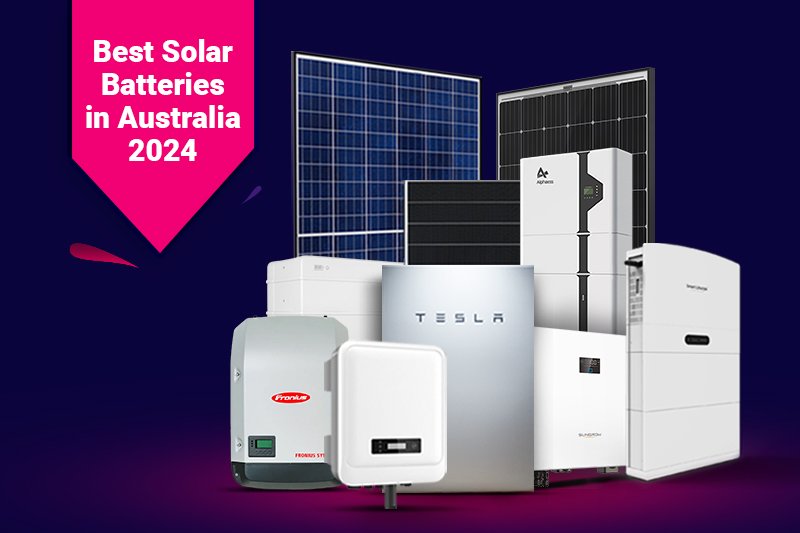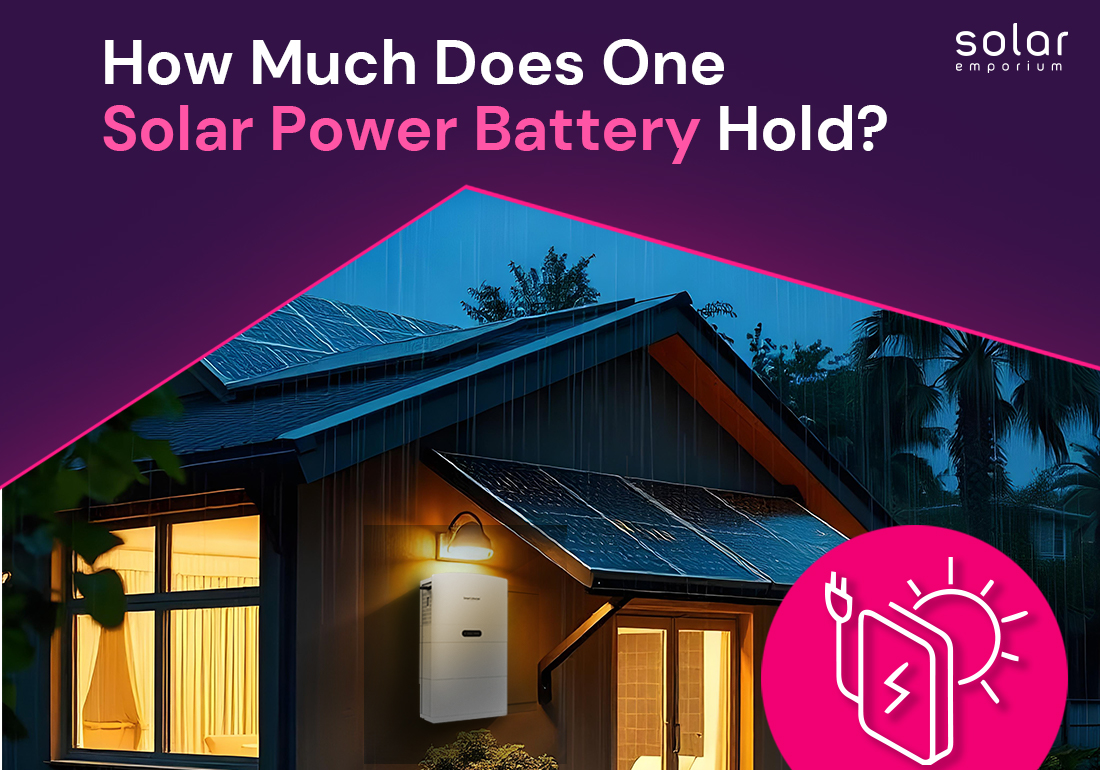Recently, the high adoption of solar panels has changed the total energy landscape in Australia. While the world is moving towards renewable energy sources, solar power batteries have become another integral part of the green revolution.
From turning sunlight into a reliable power source for our homes to fueling our vehicles, these batteries store excess energy that can be used whenever we need it the most.
But how much energy does one solar power battery hold? Which factors influence a battery’s storage capacity, and how can we maximize its efficiency?
If you have the same queries, don’t worry! This blog will unveil all the answers and help you choose the best battery option for your solar panel system.
So, let’s tag along and explore the magic behind solar storage for a sustainable and bright future!
Solar Power Batteries: The Future of Renewable Energy Storage
Australia’s journey from fossil fuels to renewable energy shines bright with a promising future.
However, such a transformation doesn’t happen overnight. Over time, they slowly adopted the changes and realized that the shift to renewable energy is not only beneficial for the planet but also economically viable.
Residents’ growing concern about rising pollution and the effects of climate change also reflects their strong commitment to sustainability and environmental responsibility.
They know they need a change to mitigate the rise in electricity prices and the inconsistency in the grid’s electric supply.
So, they are investing more in renewable energy and transitioning towards sustainable energy sources to power a brighter, cleaner world. But how is this transformation happening? What are the main sources of renewable energy in Australia?
Let’s break it down here:
What Are Solar Power Batteries?
Solar power batteries or solar energy storage systems are usually devices designed to store excess electricity generated by solar panel systems. During peak sunlight hours, the solar panel produces more energy that can be used for off-peak hours, such as at night or on cloudy and stormy days.
By integrating solar battery storage with the home electric system, Australians no longer need to send the surplus energy to the grid.
Homeowners installing solar panels with storage options can now enjoy the full benefit of renewable energy sources. Batteries integration is indeed a game changer that allows greater energy independence and brings economic benefits,
Together, solar panels and batteries empower homeowners to take control of their energy needs while supporting broader environmental goals.
Working Principle of Solar Batteries
Now let’s talk about how solar batteries work!
In the energy generation process, solar panels trap sunlight on their semiconductive surface during daylight hours and convert it into direct current (DC) electricity.
Then, a charge controller connected to the system regulates the voltage coming from the solar panels. It ensures that the battery receives optimal power and prevents it from overcharging.
DC electricity is then stored in the battery. This stored energy is then converted from DC to AC by a solar inverter and later used to power home appliances.
Homeowners can also send excess energy back to the grid, potentially earning credits or reducing energy bills through a net metering program in a grid-tied system.

The Importance of Solar Batteries During Power Outages
Let’s picture this: You are just on the verge of a weekend, done with all the work for the day, and ready to relax. Suddenly, the power goes out. It’s frustrating, especially after a long, hectic week.
This is where solar batteries come into play, transforming your weekend plans from chaos to comfort.
Having a solar battery means you still have power, and your homes can continue functioning normally if the grid power goes down. This is useful for keeping your heater and fridge running or charging your devices during the blackout.
Overall, batteries allow you to focus on critical loads, ensuring your essential needs are met. This energy independence and reliability make solar batteries important during power outages.
Understanding Solar Battery Capacity| Why It Matters?
Prior knowledge about solar battery capacity can be vital to unlocking the world of energy independence and sustainability. It can elevate your solar experience and take it to a new horizon.
So, what is battery capacity, and why does it matter?
In general, battery capacity represents the amount of energy it can store inside. It is measured in kilowatt-hours (kWh), where higher kWh ratings mean larger storage capacity with more extended power backup for your home.
For instance, a 10 kWh battery lasts longer and provides enough power to run home appliances for several hours than a 6 kWh battery.
However, remember that not all the stored energy in a solar battery is usable, as you have to consider there is a depth of discharge (DoD) feature.
The DoD of a typical battery is around 85-90%, which means you can access nearly around 85-90% of the stored energy.
So, before choosing the battery, calculate your home’s energy demand to keep your appliances running smoothly, even if there are any long-term power issues.
Storage Matters: How Much Does One Solar Power Battery Hold in Australia?
A typical Australian household consumes around 18 kW of electricity daily. However, the capacity can vary with energy usage, the number of members and home sizes.
Solar panels generate electricity directly for the household only during the daytime, but they do not produce energy at night. So, homeowners need to consider the size of their battery system to ensure enough stored energy to cover their nighttime needs.
For example, average residential solar battery capacity ranges between 5 and 15 kWh. So, If you have a 10 kW sized solar battery, considering 90-95% DoD, the reserved optimum kW of energy it holds for you to use is around 9 or 9.5 kWh per day.
Electric consumption above this level requires several or more efficient large battery systems or external grid connections.
Solar Power Battery Capacity
- Small-scale Solar Batteries: These batteries are typically small and compact. They usually range from 2 kWh to 5 kWh in capacity and are more suitable for homes with low electricity usage.
- Mid-Range Solar Batteries: Mid-range solar batteries have a capacity between 5 and 15 kWh. They are suitable for average-sized homes and can provide significant backup power.
- High-Capacity Solar Batteries: High-capacity solar batteries range from 15 kWh to over 100 kWh. From commercial buildings to large homes, they can provide backup power to any large-scale renewable projects for extended hours.
Common Battery Types and Their Storage Capacities
- Lead-acid batteries are the traditional and most affordable battery with a capacity of about 100 to 300 amp-hours (Ah)
- Lithium-ion batteries are the most efficient and widely used option in the solar battery industry. Their capacity ranges between 5-15 kWh for residential units, and they have the highest DoD with a prolonged lifespan of 15 years.
- Flow Batteries’ capacity can be scaled up from 20 kWh to hundreds of kWh for large-scale systems. They have a long lifespan and can be cycled many times.

Calculate Your Energy Needs| Choose the Ideal Solar Battery for Your Home
Nowadays, some of the most asked trending questions are: How long can a battery power a home? How many batteries do people need for solar?
Well, these questions are slightly tricky to answer as they depend on home electricity demand, battery capacity, and usage time.
That’s why it’s recommended to prioritize essential items first during a power outage, as individual appliance preferences vary.
Some may prioritize the refrigerator and cooking appliances, while others focus more on heating and device charging. So, creating a personal priority list can help maximize battery efficiency.
It’s important to remember that heating and air conditioning require significant energy and are generally not designed to operate on critical battery backup systems. While whole-home backup is possible, it necessitates a substantial solar power system with roughly 30 kWh of battery storage.
How to choose the ideal solar battery? Just follow these simple steps:
- Assess your energy use by reviewing your electricity bills. Determine your daily kWh consumption.
- Identify when your household uses maximum power and the energy you require during these times.
- Determine how much energy your solar panels are producing throughout the day.
- Estimate backup power duration and calculate the hours you want to rely on battery storage during outages.
Top Factors Influencing Solar Battery Capacity
Several factors affect the overall capacity and performance of solar batteries:
Temperature Variability
Extreme temperatures can reduce battery performance, which significantly affects the battery’s capacity and efficiency. So, consider the climate when selecting a battery.
Battery Size and Age
Batteries lose capacity with time. However, as the battery’s size determines its capacity, choose wisely whether you need the larger or smaller ones.
Depth of Discharge (DoD)
DoD is crucial to determine how much of the battery’s capacity can be used. Higher DoD means more usable energy.
Cycle Life
This indicates how many charge-discharge cycles a battery can handle before its capacity significantly declines.
Storage Efficiency
The efficiency of the solar energy storage system affects the battery’s actual usable capacity. Some energy is lost during the charging and discharging, reducing the overall usable capacity.
Best Practices for Energy Efficiency: Maximize Your Solar Battery’s Capacity
There are several key factors to optimize your solar battery’s capacity. This includes regular monitoring and maintenance and small investments in smart technologies.
For example, regular tracking using smart tools can access the consumption pattern and quickly adjust to a sustainable lifestyle.
Checking the battery’s health and maintaining cleaning practices ensures optimal performance while increasing the battery’s efficiency.
Similarly, load shifting can be an outstanding way to maximize the battery’s storage capacity. All you need to do is try to run energy-intensive appliances during peak solar generation times.
So, follow these battery maintenance tips and take a few daily measures so that you can make the most of your solar battery system.

Explore the Best Solar Battery Brands for Australians in 2024
After learning all the ins and outs of solar-powered batteries, it’s time to introduce some branded solar batteries that are leading the Australian marketplace.
Here is the list of 7 top solar power battery manufacturing brands in Australia:
- Eveready Battery
- Energizer Battery
- SLA LIFE
- BYD Premium
So, now you know which solar battery brands are best for your system. All of these listed top-tier solar batteries not only enhance energy efficiency but also provide good storage capacity, ensuring substantial savings for Australian residents.
However, you can also talk with our experts at Solar Emporium for any of your solar needs. Here we prioritize our customers’ needs and value quality over quantity.
Contact us today without further delay and get a free solar quote!







